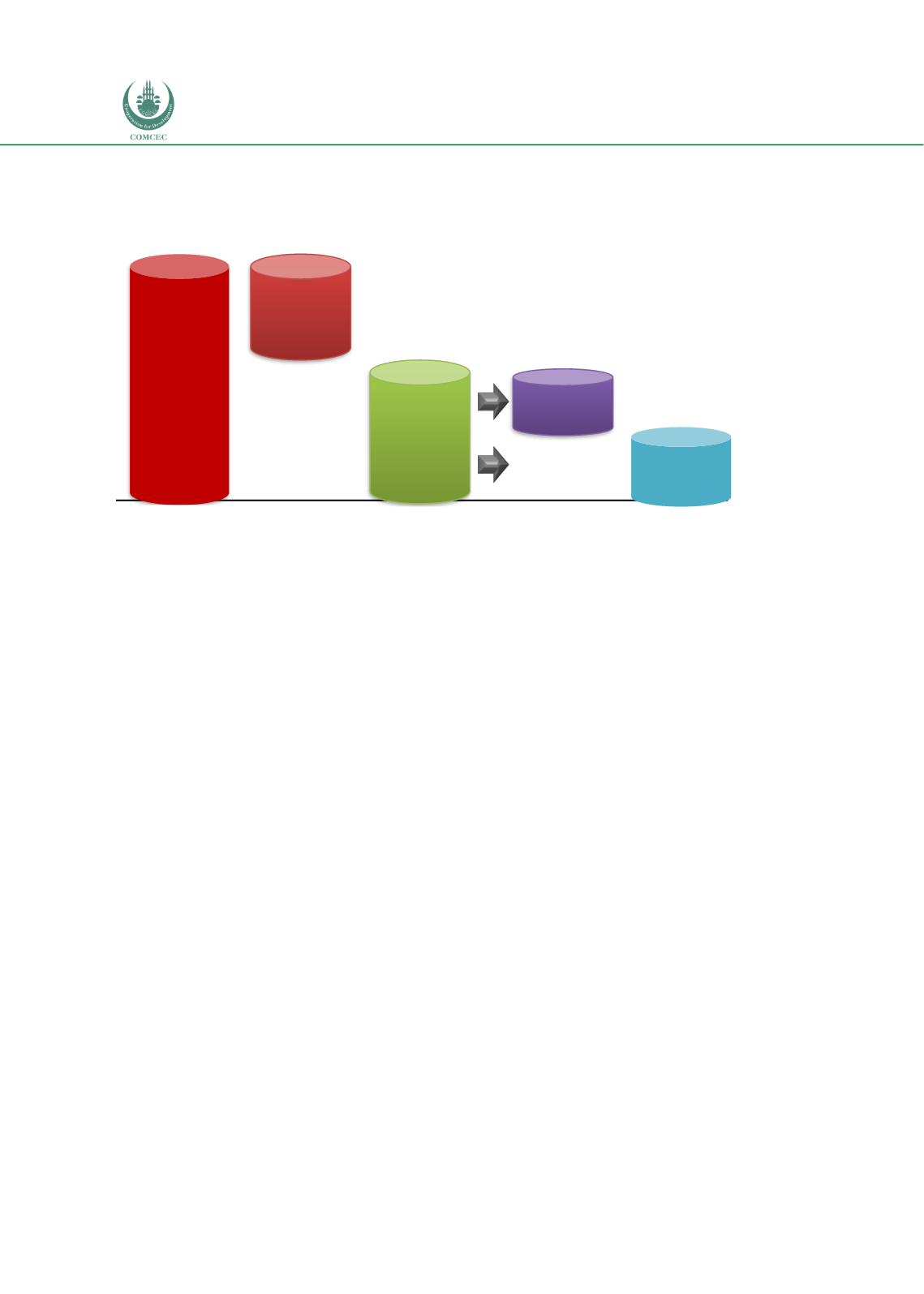

Infrastructure Financing through Islamic
Finance in the Islamic Countries
76
Chart 4.1. 5: Composition of Projected Sources Infrastructure Financing (IDR trillion)
Source: Bank Indonesia, Ministry of Finance and OJK (2018)
4.1.3.
National Level Policies and Framework for Infrastructure Development
As shown in Chart 4.1.1 the infrastructure of Indonesia has lagged behind other countries in
the South-east Asian region. For example, during the period 2008-2012, the Infrastructure
investments in Indonesia were around 1.5% of the GDP compared to the 9% of GDP in
Malaysia and 7% of GDP in Thailand (ADB undated). Recognizing that infrastructure
investments are insufficient and also to enhance the role of the private sector in the sector, the
government has taken some specific steps to improve the overall legal and institutional
environment for facilitating public-private partnerships.
Infrastructure investments are guided by the medium term national development planning
(RPJMN) 2005-2025 adopted by the government of Indonesia. The broad targets of RPJMN
include increasing the national per capita income to the level of upper middle-income
countries in 2025; reducing the unemployment rate to less than 5%, and bringing the poverty
rate to below 5% of the total population. RPJMN was divided into four periods that had their
own targets. The key overall targets for each period are shown in Table 4.1.4.
To achieve the broad goals of each period, specific projects are identified for implementation.
For example, for RPJMN 2015-2019 a total of 1600 national infrastructure projects have been
identified. However, a sub-group of projects under RPJMN are classified as National Strategic
Projects (PSN) and, within this group, some are identified as Priority Projects. Under
Presidential Decree Number 58 year 2017, the government classified 245 projects (out of 1600
projects) as National Strategic Projects and 30 projects out of these are considered Priority
Projects.
1,751.6
SOE
Private
2,817.8
1,066.2
Demand for
Financing
Government
Budget
Financing
Opportunity
4,796.2
1,978.4
41.3%
58.7%
22.2%
36.5%
100%
















